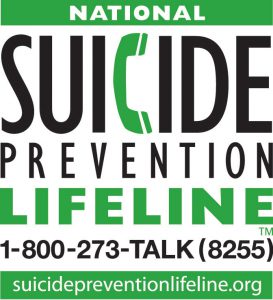If you’ve ever felt the hopelessness of depression or experienced any suicidal thoughts, you are already well aware of how painful these troubling thoughts and emotions can be. At that time, perhaps you felt like you had fallen into a dark void with no possible escape. Perhaps you felt that ending your own life was the only way to ease your pain – or to free your loved ones from their pain.
Whatever the case may be, know that you are not alone – and that there is another way. Read on for a suicide prevention toolkit to help you (or a loved one) through this difficult time.
About the Suicide Epidemic
Suicide is something most people try to distance themselves from in our society. We falsely tell ourselves that suicide is something that happens to other people – not to us. As much as we may try to deny it, suicide is a very real epidemic in our society. According to documentary filmmaker Eric Steel, one person jumps from the Golden Gate Bridge approximately every two weeks. Meanwhile, suicide has jumped to become the second leading cause of death among American adolescents and teenagers in recent years.
Suicide Prevention Toolkit
The “Suicide Prevention Toolkit” outlined below is a combination of short- and long-term suicide prevention tips and techniques, as well as emergency resources for those who are currently in crisis. This is a potentially life-saving toolkit for anyone currently in the throes of suicidal thoughts.
Emergency Resources
Let’s start by covering emergency resources, as this is the most urgent need for anyone with suicidal thoughts. The following resources are available and beneficial to anyone currently contemplating suicide. These beneficial services are immediately available to help you:
- Suicide Prevention Hotlines
Obviously, one of the most convenient and immediately available resources for anyone contemplating suicide is the assistance of a suicide prevention hotline. - Licensed Professionals
Many counselors, therapists and other licensed professionals are specially trained in suicide prevention and intervention techniques.
Short- and Long-Term Prevention
The following short-term and long-term prevention strategies are also readily available to those who are prone to suicidal thoughts and behaviors, or any risk factors for suicide. Risk factors for suicide may include (but are not limited to): depression, anxiety and/or other mental illnesses; drug abuse (such as heroin addiction); and even the usage of certain prescription medications.
Postvention Techniques
- Postvention – or intervention techniques which occur after a suicide attempt or a suicide intervention – might include increasing help-seeking behaviors, getting into addiction recovery treatment (if applicable), and improving life skills, resilience and connection to others.
- Yoga and Meditation
Breathwork-focused techniques including yoga, meditation, tai chi and qi gong have been shown to be effective in reducing the risk of suicide – including among those with PTSD, such as war veterans.
In Conclusion: Saving Lives
Author Glennon Doyle Melton once said, “All we can do is offer relief from this fear: I am all alone. That’s the one fear you can alleviate.” Hopefully, with help from the resources listed above, you can bridge the connection between yourself and your loved ones, saving lives by reminding us all that we are never truly alone.




